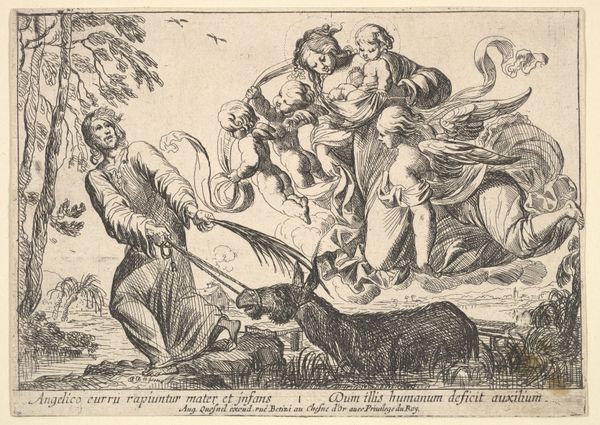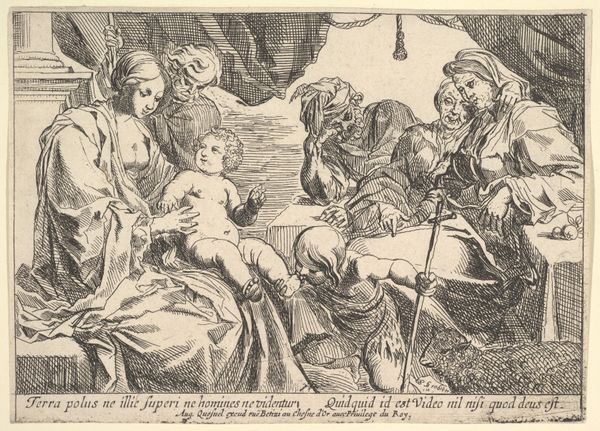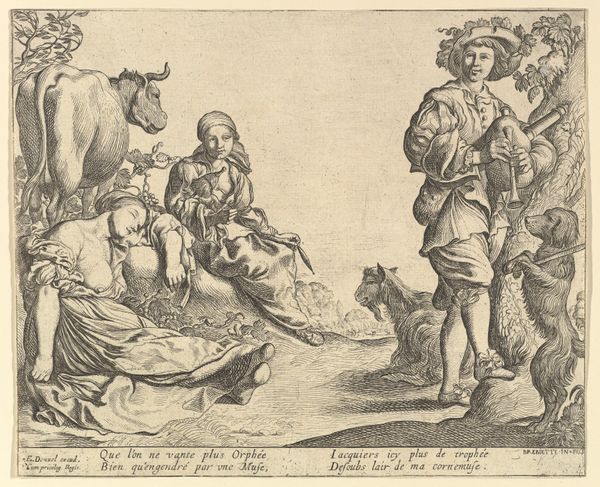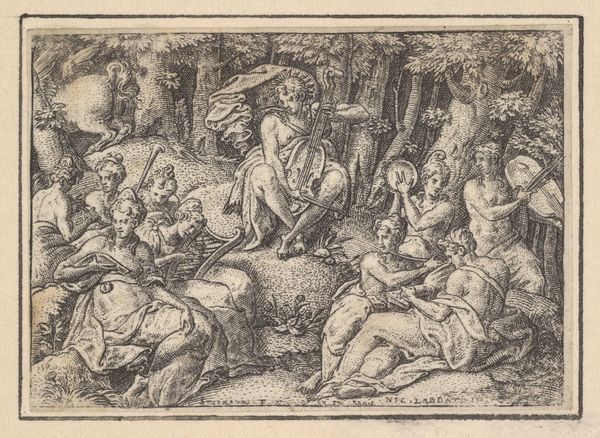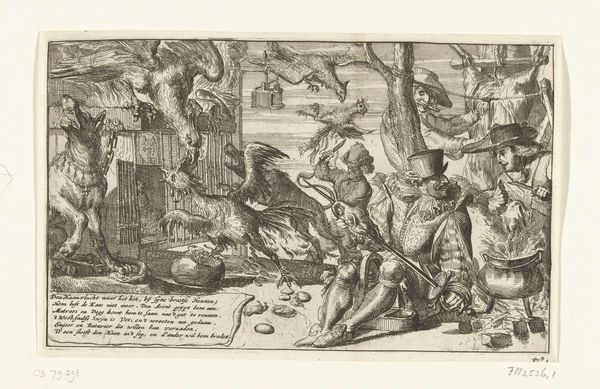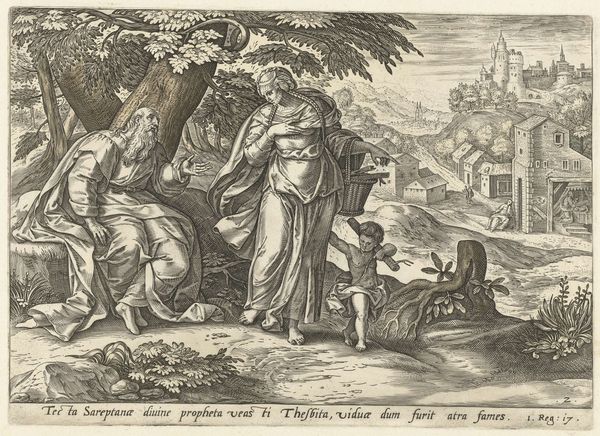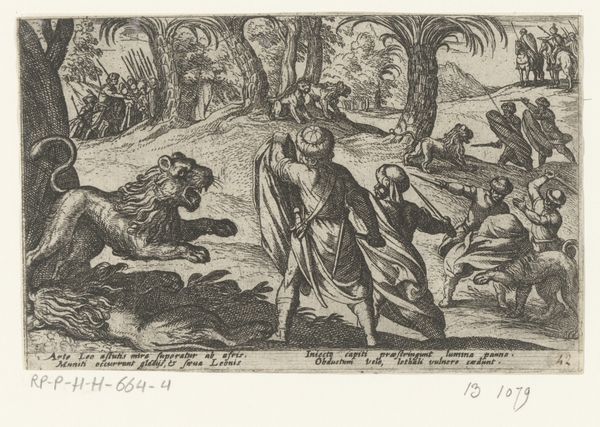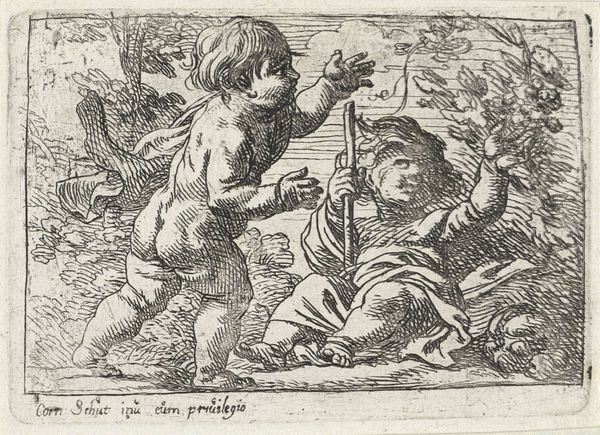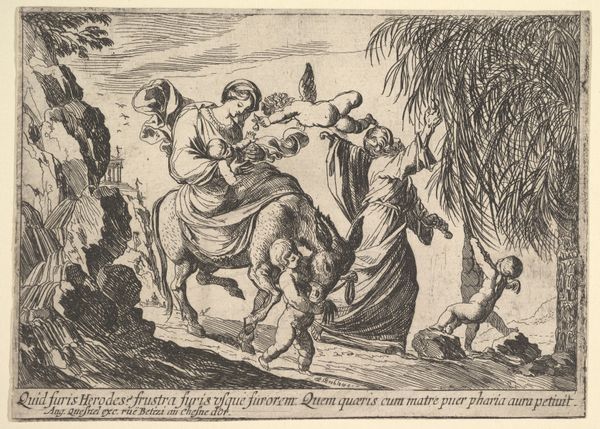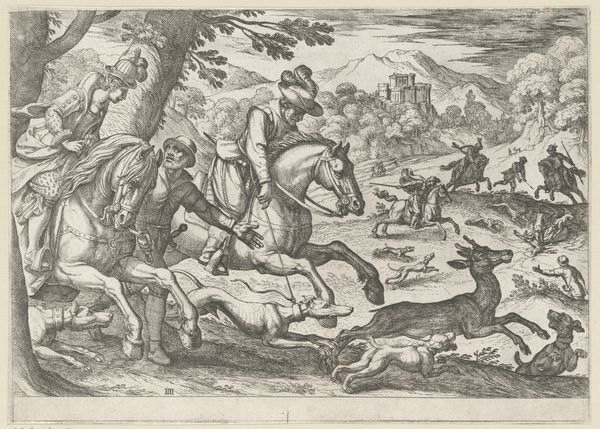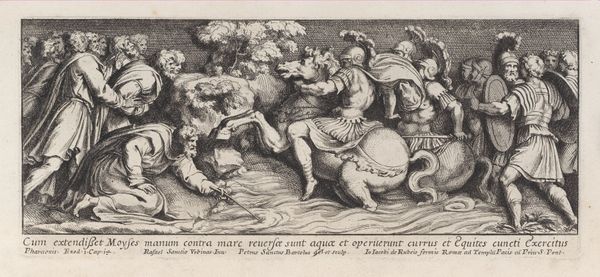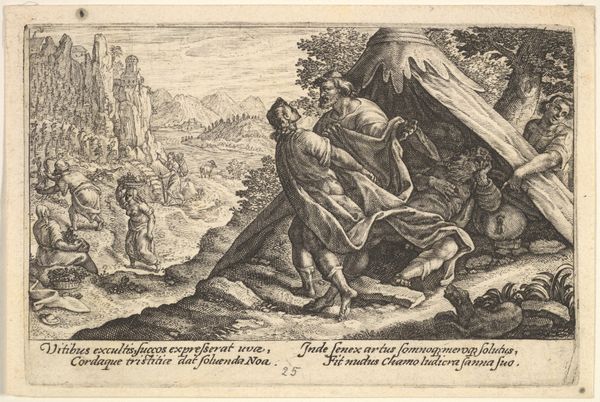
Angels Giving Fruit to the Sleeping Holy Family 1610 - 1642
0:00
0:00
drawing, print, etching, engraving
#
drawing
#
narrative-art
#
baroque
#
pen drawing
# print
#
etching
#
landscape
#
france
#
history-painting
#
engraving
Dimensions: 4 7/16 x 6 3/16 in. (11.3 x 15.7 cm)
Copyright: Public Domain
Curator: Pierre Brebiette’s "Angels Giving Fruit to the Sleeping Holy Family," created sometime between 1610 and 1642, employs engraving and etching to depict a tender scene. It's currently housed at the Metropolitan Museum of Art. Editor: My first impression is one of quietude and care. Despite the linear hatching of the engraving, a remarkable softness pervades, especially around the figures. The scene breathes an almost dreamlike sense of calm. Curator: Exactly. Brebiette uses line to build both form and shadow, notice how the density increases around Joseph, contrasting with the open, airy depiction of the angel bearing gifts. This speaks to a structured, Baroque sensibility in organizing the composition. Editor: But look closer. The context, for me, is key. This moment of respite, likely during the flight into Egypt, speaks to themes of refuge, migration, and the vulnerability of families seeking safety. Mary's vulnerable pose emphasizes that she's a refugee. It brings to mind parallels to present-day crises. Curator: Indeed, and considering its formal qualities, Brebiette’s manipulation of perspective draws the eye directly to the sleeping Virgin and Child. The angels frame this intimate space, reinforcing its sanctity. The fruit they bear, visually heavy, introduces concepts of divinity. Editor: That compositional focus undeniably reinforces Mary’s iconic role. Still, I can’t help but wonder about the laborers and the working classes from whom Brebiette’s patrons and the art world would have taken much inspiration. Can't they be afforded even a fleeting artistic memorial, perhaps? Curator: That raises essential questions regarding labor's representation and class. Perhaps in future examinations of Baroque imagery, we can foreground class dynamics alongside formal elements. Thank you for giving these urgent narratives prominence. Editor: Art compels us to consider not only history but our contemporary reality. And this particular piece pushes these very essential themes surrounding motherhood and vulnerability.
Comments
No comments
Be the first to comment and join the conversation on the ultimate creative platform.
